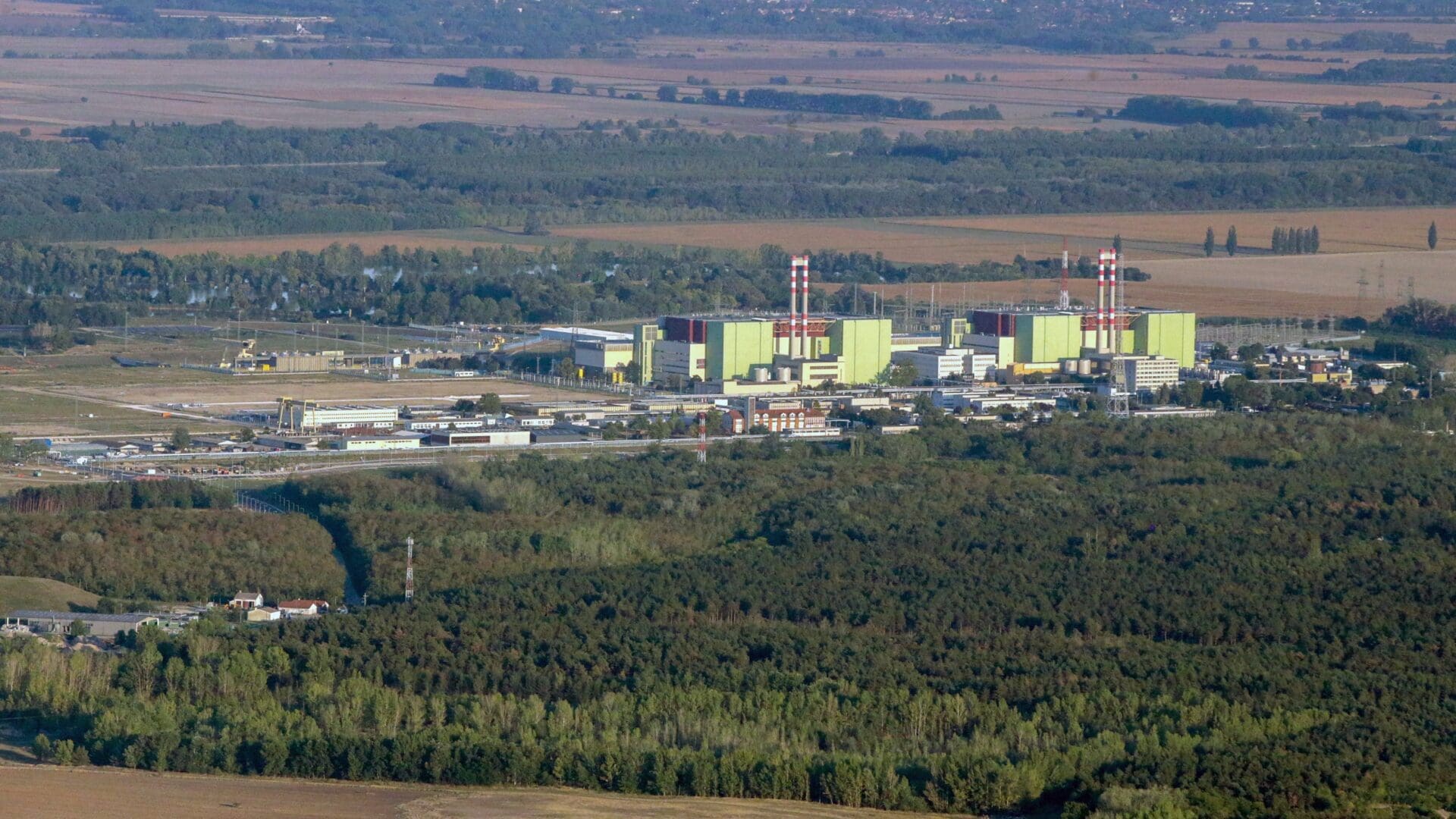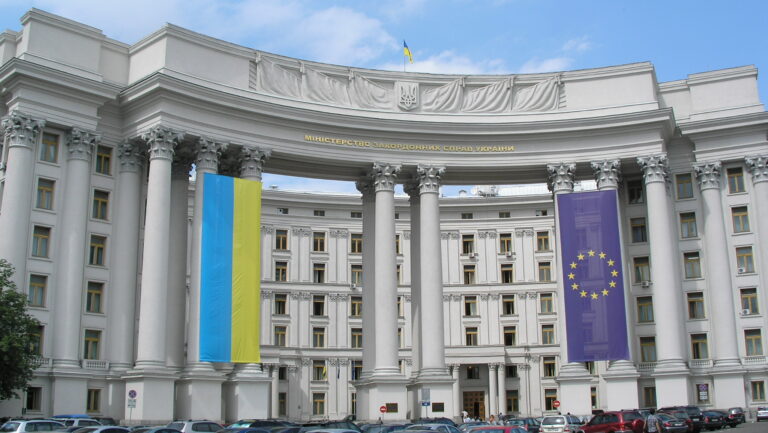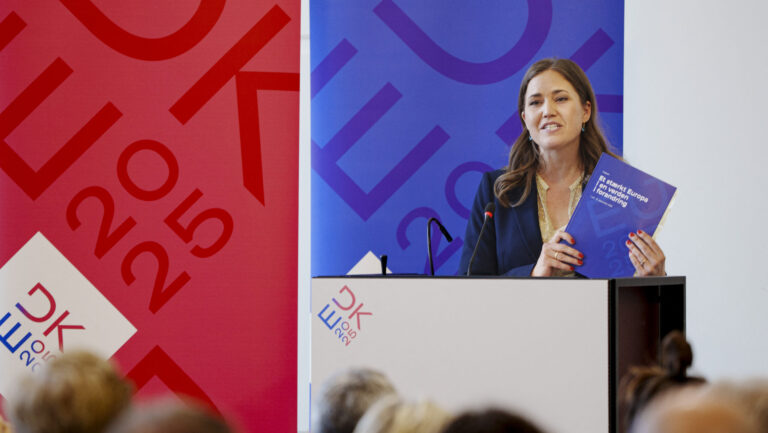The following is a translation of an article written by economist Károly Lóránt, originally published on Mandiner.hu.
Many doubt that the EU’s climate neutrality targets for 2050 are achievable. A recent EU-commissioned study makes it clear that the EU’s energy policy is wrong and that meeting all energy demands exclusively with wind and solar power is unfeasible.
In the European Parliament, the European Conservatives and Reformists Group (ECR) and the Renew Europe Group commissioned a study entitled Road to EU Climate Neutrality by 2050. In the course of the study, concrete calculations were made for two countries, the Netherlands and the Czech Republic, on what would happen if their energy demand in 2050 were met entirely by wind, solar, and nuclear energy. Among other issues, two main characteristics were calculated for both countries: the area occupied by power plants and the cost of energy. Concrete examples were also given of the components of the costs involved—such as how changes in the share of renewables would affect expenditure—, as well as the advantages and disadvantages of each solution.
Huge Land Requirements
Calculations show that the significant land requirements make climate neutrality only with wind and solar power unfeasible. For the Netherlands, the 3,000 petajoules (1 petajoule=1 trillion joules) of energy needed in 2050 to be generated by solar and wind power, including the uncertainty of the calculation, would require an area of 24–68,000 square kilometres, which is at least half, but could be as much as one and a half times the size of the country’s 42,000 square kilometres. Meanwhile, a nuclear power plant meeting the same energy demand would require only 120 square kilometres. In 2050, the Czech Republic will need 1,800 petajoules of energy, which would require between 15 and 44 thousand square kilometres and between 19 and 55 per cent of the country’s 79 thousand square kilometres. At the same time, a nuclear power plant meeting the same energy demand would require only 269 square kilometres.
The study also found that the cost of nuclear energy is generally lower than that of wind and solar energy—in some cases, a quarter of the latter. On top of that, even if the European Union were to achieve climate neutrality, it would make virtually no difference to the climate, as our continent is only responsible for less than ten per cent of global carbon emissions. The EU’s climate neutrality programme would only reduce global temperatures by 0.02 to 0.06 degrees Celsius,
so to make a real difference would require a significant reduction of other countries’ carbon emissions as well.
Even if developed countries’ emissions were to fall, the emissions of those nations that are now industrialising will keep increasing because their rapidly expanding energy needs can only be met by fossil fuels. The calculations show, too, that the cost of electricity supply will rise exponentially as the share of renewables increases because longer-term fluctuations in renewable generation will have to be compensated for by the installation of backup capacities. In the sample case of the study costs are broken down into two main categories: energy production and network integration costs. For network integration, four cost components are distinguished: short-term balancing costs due to short-term power fluctuations; network costs, which require network connections to be established for power generated in remote areas such as offshore; availability costs, which are the costs of backup capacities for short-term fluctuations; and so-called profile costs, which result from long-term power fluctuations of renewable energy. As the role of wind power in electricity supply increases, integration costs also increase rapidly, reaching 40 per cent of production costs, so that the price of wind power doubles. Besides, the study commissioned by the EP groups also shows that as the use of renewable energy increases, the need for storage capacity increases exponentially as well.
Problematic Temporal Fluctuation
The Makronóm Institute, a Hungarian-based conservative think-tank, has also carried out calculations for the EU as a whole to assess how realistic EU policies are. These focused on a comparison between renewables and nuclear energy, looking at the land requirements, and, for renewables, the storage capacity required. The calculations are based on the assumption that, due to efficiency gains, total energy use in the EU will remain at current levels until 2050, and that the ratio between gross and net use will improve as fossil fuels are phased out so that gross domestic energy consumption will fall to 14,363 terawatt-hours in 2050 from 16,895 in 2020. Part of this energy is to come from sources such as hydropower and biomass, which are assumed to remain unchanged in both scenarios, but their growth is taken into account for hydropower, biomass, and geothermal energy, in line with EU ideas. These energy sources will amount to 3,597 terawatt-hours in 2050, with nuclear, wind, and solar power supposed to meet the rest. Our study has assumed that the use of nuclear energy will remain unchanged at 2,290 terawatt-hours, with the rest coming from wind and solar energy in equal shares of 4,238 terawatt-hours each. We presumed a time efficiency of 22 per cent for wind and 12 per cent for solar, and an area requirement of 100 square kilometres per gigawatt for wind and 15.6 square kilometres per gigawatt for solar. These are a wide range of averages, described in scientific literature.
According to our calculations, meeting the EU’s energy needs from wind power would require 2,199 gigawatts of capacity, significantly more than the 167 gigawatts currently installed. To reach this target, nearly seven times more capacity would need to be installed each year than in recent years. The situation for solar is even worse: the required capacity is 4,032 gigawatts, which would require 130 gigawatts per year, compared to six in recent years. If these capacities were built, wind power generation would occupy 220,000 square kilometres, two-thirds of Germany, and solar power 63,000 square kilometres, one and a half times the size of Denmark.
These figures alone indicate that meeting the EU’s entire energy needs exclusively with wind and solar power is not feasible,
but the biggest problem comes from the variability of these sources over time. To compensate for the variability within a year and between each year, US experts recommend 33 days of reserve capacity to ensure that the necessary electricity supply can be guaranteed at all times. This means that 383 terawatt-hours of storage capacity are needed to ensure a continuous supply of 4,238 terawatt-hours of energy from wind power.
The number of hours of sunlight per month in Hungary varies between 40 and 296. For solar power plants, the required storage capacity was calculated on this basis. This means that about a quarter of the 4,238 terawatt-hours of energy produced, i.e. 1,017 terawatt-hours, would have to be stored to ensure adequate energy supply in winter, too. The two storage capacities required are a total of 1,400 terawatt-hours. This is an amount that would require 104 billion of Elon Musk’s Tesla Powerwall 2 battery, with a storage capacity of 13.5 kilowatt-hours, at a cost of $1.04 trillion and a guaranteed lifetime of only ten years. The storage capacity required is therefore not possible with batteries; however, the idea of hydrogen storage has been mooted as well. Apart from the fact that the efficiency of converting hydrogen from electricity to hydrogen and then back to electricity is around 50 per cent, the main problem is storing hydrogen. To store 1,400 terawatt hours of energy, 42 million tonnes (462 billion cubic metres) of hydrogen would need to be stored. Attempts to store hydrogen are underway, with 1 million cubic metres of hydrogen stored at 50-bar pressure at Teesside in the UK since 1972, but this storage capacity is still orders of magnitude below what is needed.
A Change of Attitude Is Necessary
Considering all the impacts, the study highlights that the EU’s climate neutrality targets for 2050 risk policy failure. However, in the energy transition, this risk can be reduced by applying so-called ‘no regrets’ options. Nuclear energy is just such a solution, offering significant advantages over wind and solar energy in terms of both space and cost.
The Makronóm Institute has also calculated a variant if climate neutrality were to be achieved through nuclear power. This would require an 11-fold increase in current nuclear capacity over 30 years, which would mean building 37 gigawatts of capacity per year, that is, fifteen nuclear power plants of 2,400 megawatts each year—the equivalent of Paks II—, a tightly paced but not impossible task. The cost of this, taking into account the estimated cost of Paks II at EUR 12 billion, would be EUR 180 billion per year, which is just over one per cent of the European Union’s annual GDP, and in this case, there would be no need for storage capacity either.
The calculations of the EP groups and ours both show that the European Union’s energy policy is fundamentally flawed and that
the targets set, namely a significant reduction in carbon dioxide emissions, can only be achieved by actively involving nuclear power plants.
To meet climate targets, the EU and its Member States will therefore need to change their energy policies. In current EU and national policies, renewable energies enjoy a range of support that nuclear energy does not. These include earmarked amounts for research and related developments, as well as support for renewable energy investments in the form of credit guarantees, soft loans, and tax allowances. In addition, the energy produced from them is favoured: its purchase is compulsory and at a fixed price, and the negative environmental impacts they cause and the costs of balancing the electricity network are not included in the cost of renewable energy production. In order to achieve climate neutrality and meet energy demands, the EU must put renewable and nuclear energy on an equal footing and promote a ‘nuclear renaissance’, treating all decarbonised power generation technologies equally. Like renewables, nuclear energy should also benefit from fast-track, efficient licensing and regulatory procedures, and be guaranteed legal and policy certainty.
Related articles:
Click here to read the original article.








